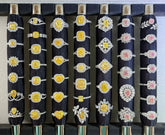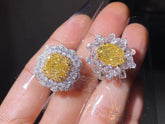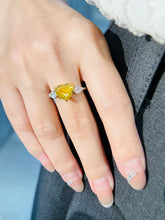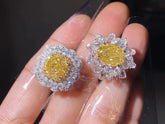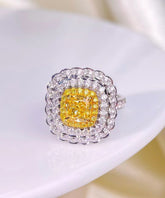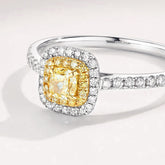What types of diamond certification are there? How do the certifications differ in terms of their credibility and value?
Each natural diamond is unique. How can its size, color, clarity, and cut be categorized? It is impossible to distinguish whether a diamond is natural, synthetic, or treated with the naked eye. How can its authenticity be verified? A diamond certificate acts as the diamond's identification card. The certificate issued by an authoritative diamond grading institution is the only proof of a diamond's quality.Let me introduce you to the four most common authoritative diamond certificates.

1. GIA Certificate
Full Name: Gemological Institute of America
Established: 1931
Certificate Status: The GIA created the 4C diamond grading system, which is still in use today, and is the pioneer in standardizing diamond grading on an international scale.
Main Feature: As the standard setter, the GIA is renowned for its precise control over the 4C grading standards.
Important Note: Diamonds with a GIA certificate tend to be more expensive than those with other certificates. This is not only because GIA's grading fees are higher but also because, from marketability to credibility, people generally have more confidence in the grading results of this standard-setting institution.

Review: When it comes to diamond certificates, many people think of GIA. In the market, GIA diamond certificates are almost considered mainstream and can even be called the most authoritative and objective diamond certificates. While other institutions can produce numerical grading results, only GIA has established the grading standards. As the standard setter, GIA has the most precise control over the 4C grading standards. For example, in color grading, GIA uses the letters D-Z to represent the color spectrum from colorless to colored. In terms of clarity, GIA goes beyond the European 'loupe clean' standard by subdividing it into 'Flawless' and 'Internally Flawless.' GIA diamond certificates are regarded as the mainstream in the diamond consumer market. From marketability to credibility, people generally trust the grading results of the GIA certificate. Therefore, GIA diamond certificates are widely recognized and highly regarded by both industry professionals and consumers.
2. HRD Certificate
Full Name: Hoge Raad voor Diamant
Established: 1973
Certificate Status: Established in Antwerp, Belgium, the diamond cutting center, HRD co-drafted the International Diamond Grading Standard (IDC) with the International Diamond Council.
Main Feature: HRD is particularly notable for its grading of colored diamonds and the verification of their natural origin.
Important Note: HRD has also introduced a quick 'Diamond Identification Certificate' for diamonds under 1 carat. This certificate is straightforward but contains fewer details.

Review: HRD diamond certificates use more descriptive language compared to others. Instead of using D, E, F, etc., to grade diamond color, HRD uses terms like 'White' and 'Slightly Tinted White, and does not further distinguish colors below N. HRD certificates are the mainstream in the European diamond market and are more favored by European consumers compared to GIA certificates.
3. IGI Certificate
Full Name: The Institute of Gemology
Established: 1975
Certificate Status: The world's largest independent gemological laboratory, IGI has laboratories in major diamond trading centers worldwide and is known as the 'authoritative appraisal institute for consumers.'
Main Feature: IGI can issue certificates in various layouts and formats for diamonds of any size, making them easy to carry. Despite its small size, each certificate is comprehensive and is issued according to strict international standards, with multiple anti-counterfeiting measures.
Important Note: IGI certificates provide extremely precise descriptions of diamond cut information. Under the 'Finish' section, they further subdivide proportions into Symmetry, Polish, and Proportion, providing detailed descriptions of diamond details such as the culet and girdle.
Additional Information: IGI has a rich history. It originated from a private collection of a Belgian diamond family, later gaining attention from European royalties. It can provide detailed and accurate identification results for already set and complex crowns, necklaces, and rings, earning increasing trust. Moreover, IGI developed patented technologies such as laser inscription and darkroom photography and pioneered and promoted the 3EX cut grading system. It has long been a leader and standard setter in the global gemology field.

4. AGS Certificate
Full Name: American Gem Society
Established: 1934
Certificate Status: AGS is the world's most authoritative institution specializing in diamond cutting. Besides carat weight, AGS grades the cut, color, and clarity of diamonds on a scale from 0 (best) to 10 (worst). AGS has revolutionized diamond cutting by formalizing the cut grading system, placing a significant emphasis on the cut within the 4Cs.
Main Feature: AGS pioneered the 0-9 cut grading system before GIA's 3EX cut grade was introduced, with 0 representing the Ideal Cut or Perfect Cut.
Important Note: While AGS is not as widely recognized globally, its standards are slightly higher than those of GIA. In Europe and America, the term 'perfect cut' often refers to the AGS 0 grade standard, whereas a GIA Excellent cut might only be a 1 on the AGS scale.

FAQs
What are the 4Cs of diamond grading?
The 4Cs of diamond grading are Cut, Color, Clarity, and Carat weight. These factors are used to determine the quality and value of a diamond.
Can you distinguish between natural, synthetic, and treated diamonds with the naked eye?
No, it is impossible to distinguish between natural, synthetic, and treated diamonds with the naked eye. Specialized equipment and expertise are required to verify a diamond's authenticity.
How can the authenticity of a diamond be verified?
The authenticity of a diamond can be verified through a diamond certificate issued by an authoritative diamond grading institution. These certificates provide a detailed analysis of the diamond's characteristics.
What is a GIA Certificate?
-
Full Name: Gemological Institute of America
-
Established: 1931
-
Main Feature: Renowned for precise control over 4C grading standards.
-
Important Note: GIA certificates are widely recognized and often considered the most authoritative and objective. Diamonds with GIA certificates tend to be more expensive.
What is an HRD Certificate?
-
Full Name: Hoge Raad voor Diamant
-
Established: 1973
-
Main Feature: Notable for grading colored diamonds and verifying their natural origin.
-
Important Note: HRD certificates use more descriptive language and are more favored by European consumers.
What is an IGI Certificate?
-
Full Name: The Institute of Gemology
-
Established: 1975
-
Main Feature: IGI can issue certificates in various layouts and formats for diamonds of any size. They provide extremely precise descriptions of diamond cut information.
-
Important Note: IGI certificates include detailed descriptions and multiple anti-counterfeiting measures.
What is an AGS Certificate?
-
Full Name: American Gem Society
-
Established: 1934
-
Main Feature: AGS specializes in diamond cutting and grades diamonds on a scale from 0 (best) to 10 (worst).
-
Important Note: AGS standards are slightly higher than GIA's, and the term 'perfect cut' often refers to the AGS 0 grade standard.
